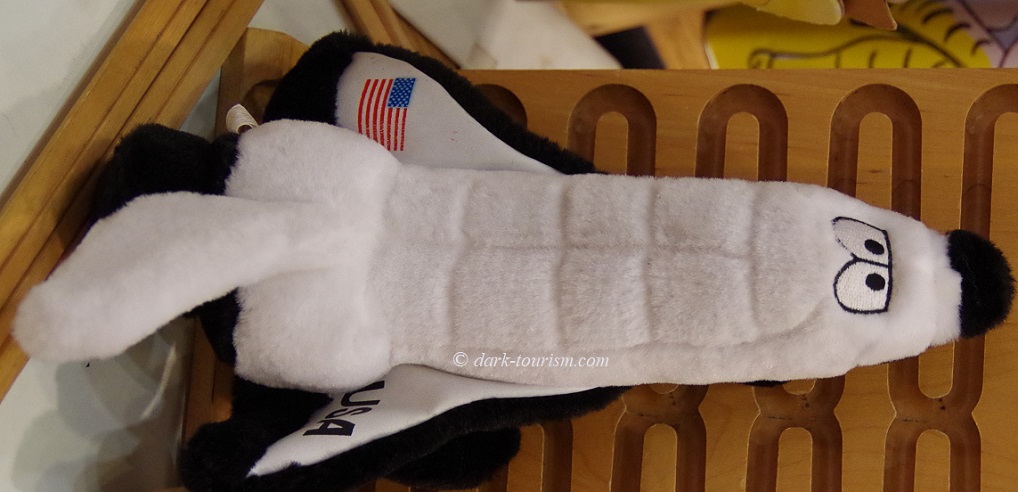On this day, 35 years ago, on 28 January 1986, the “Challenger” space shuttle disaster happened. Last year on this date I posted a photo of this fluffy toy space shuttle, seen above in the featured image, on my then still active Facebook DT page (see archive). Here I can bring you some more photos and a little extra info.
The “Challenger” disaster had actually been preventable, problems with the joints of the sections of the solid rocket booster (SRB) had long been known, and some engineers even almost predicted exactly what then happened for real on that fateful day. Moreover, the low temperature on the day of the launch from Cape Canaveral (below freezing – and that in Florida!), was a key factor, as it was below the safe margin for the SRBs. Nevertheless, the warnings were not disclosed, and the low temperature only led to a short delay. Then the launch went ahead anyway.
And so it happened that a gap formed on a damaged joint ring on the right-hand-side SRB and a plume of hot gas started shooting through the gap into the open, as was later seen on the video footage of the launch. At 72 seconds into the flight the right SRB loosened and less than a second later ruptured the main external fuel tank to which the two SRBs are attached. The last utterance from the crew cabin recorder was an “Uh-oh” by pilot Michael Smith. The main fuel tank then exploded in a large fireball. The two SRBs carried on uncontrolled until they were destroyed shortly before burnout. The space shuttle meanwhile could not withstand the aerodynamic stress created by the break-up and began disintegrating quickly. The strongly built crew compartment, however, survived the break-up – as was also seen in video footage of the disaster. So it had to be assumed that the crew were still alive when they set off on their now free-falling ballistic trajectory into the Atlantic. But impact on the ocean surface at the velocity the crew compartment had picked up on its 20km fall was not survivable. And so all seven crew were lost. The fall had lasted over two and a half minutes.
The crew compartment was discovered after a lengthy search operation. When the compartment was examined it was found that some of the crew’s emergency air packs had been activated, confirming that at least a couple of the astronauts had survived the break-up and were aware of their situation (though for how long they may have stayed conscious could not be determined). The pilot’s air pack with its activation switch on the back must have been activated by somebody else, most likely crew member Resnik or Onizuka.
And the latter name brings me back to the photo above. I took it at the Onizuka Space Center at Kona airport on Big Island, Hawaii. Ellison S. Onizuka was a Hawaii-born pilot and astronaut of Japanese descent. The museum pays homage to Onizuka and the other perished crew members, provides details about the space shuttle programme, while also showcasing a wider context of the history of space exploration before and after the disaster. A special emphasis is naturally on Onizuka’s life, and several items relating directly to him are on display, including this former NASA uniform:
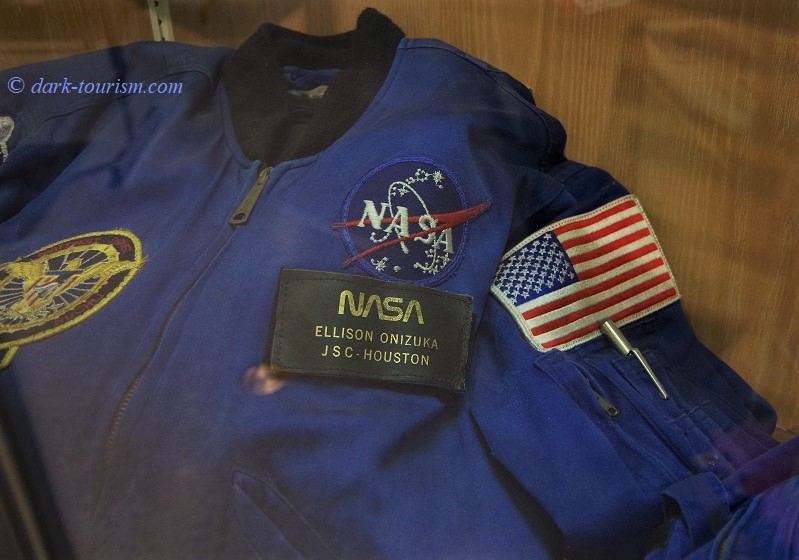
In the first section of the museum stands a model “Challenger” space shuttle, complete with external fuel tank and the two SRBs, next to a memorial plaque for Onizuka and his fellow crew members:
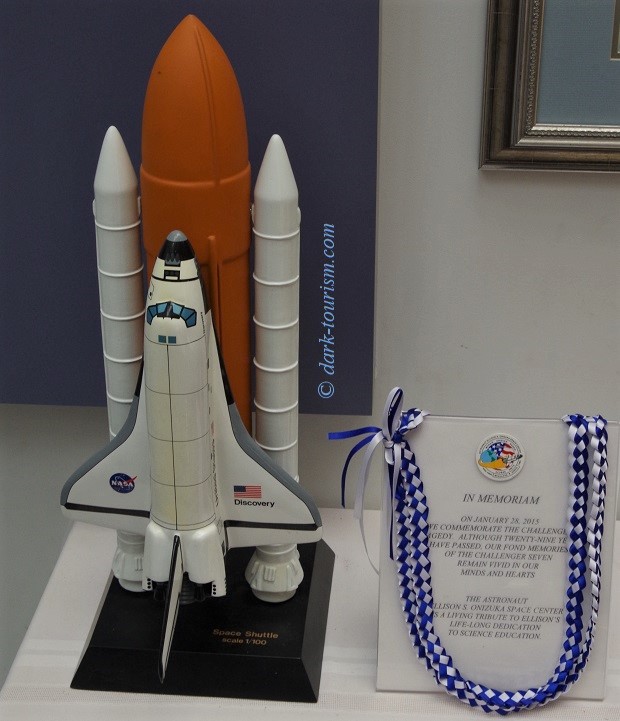
Also amongst the displays is a copy of the space shuttle’s operating manual:
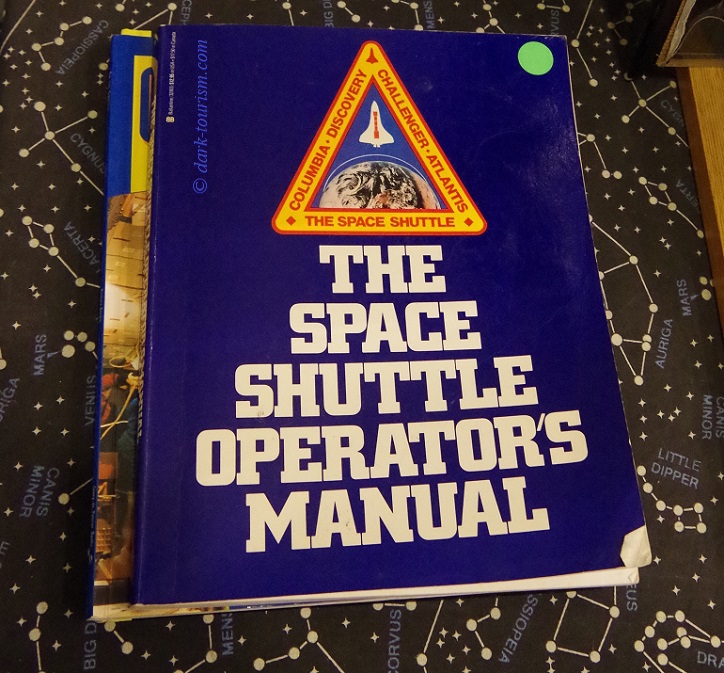
I leafed through the manual for a bit, which was partly too technical to be transparent to a non-specialist, but also illuminating to the layperson’s eye, e.g. in the section about the preparation of space food. One section was about Entry and Landing Emergencies – but obviously this would not have helped the “Challenger” crew:
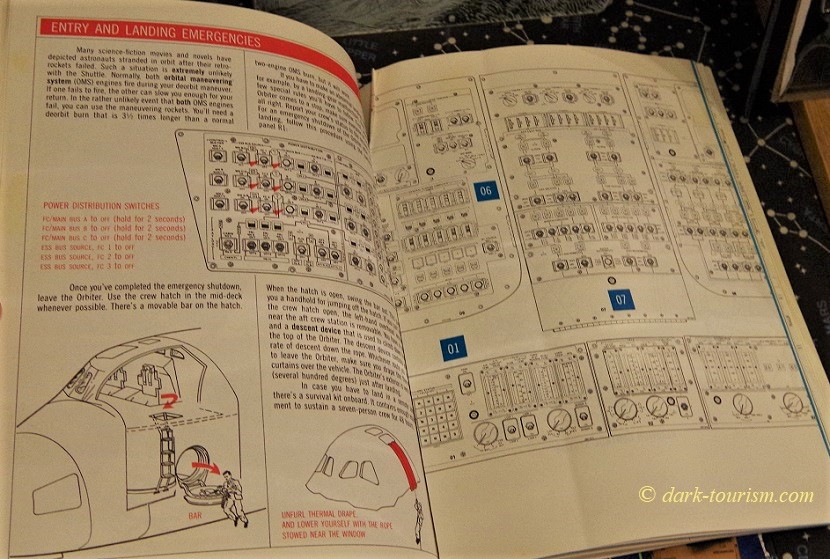
The fluffy space shuttle I found in a kid-friendly section of the museum. It was an exhibit and not for sale in the museum shop, otherwise I would almost certainly have purchased one. I did buy an Apollo-13 patch, though. Btw. the fluffy shuttle wasn’t the only soft toy on display in the museum, they also had this space-dog in a shuttle suit:

The loss of “Challenger” and its crew was the second deadly accident in the USA’s space programme, after the Apollo 1 capsule had been destroyed in a fire on land, killing all three crew members, in 1967. Nor was “Challenger” the last deadly accident. In 2003 a sister shuttle, “Columbia”, broke up on re-entry into the atmosphere, again killing all on board. At the Onizuka Space Center, these other disasters’ victims were also honoured, even as “fallen heroes”, as on this memorial plaque:
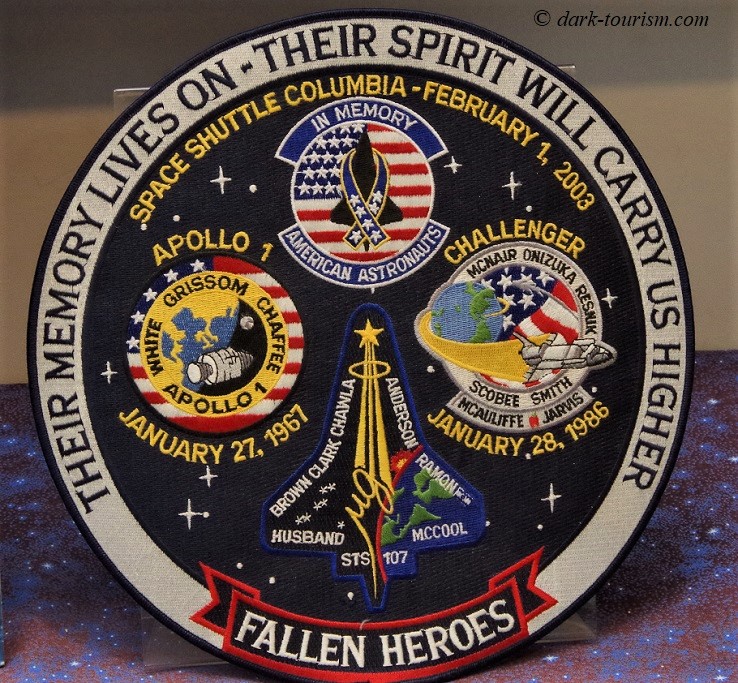
The only real space shuttle I’ve ever seen in the flesh was the first prototype one, “Enterprise”, when it was still on display at the Smithsonian’s Steven F. Udvar-Hazy Center at Washington D.C.’s Dulles International Airport in Virginia:

Two years after I saw the “Enterprise” there in 2010, it was moved to another exhibition in New York, and replaced at the Smithsonian by the “Discovery”, the third shuttle built, after it had been retired in 2011. This had completed 39 missions over 27 years, more than any other spacecraft in history.

